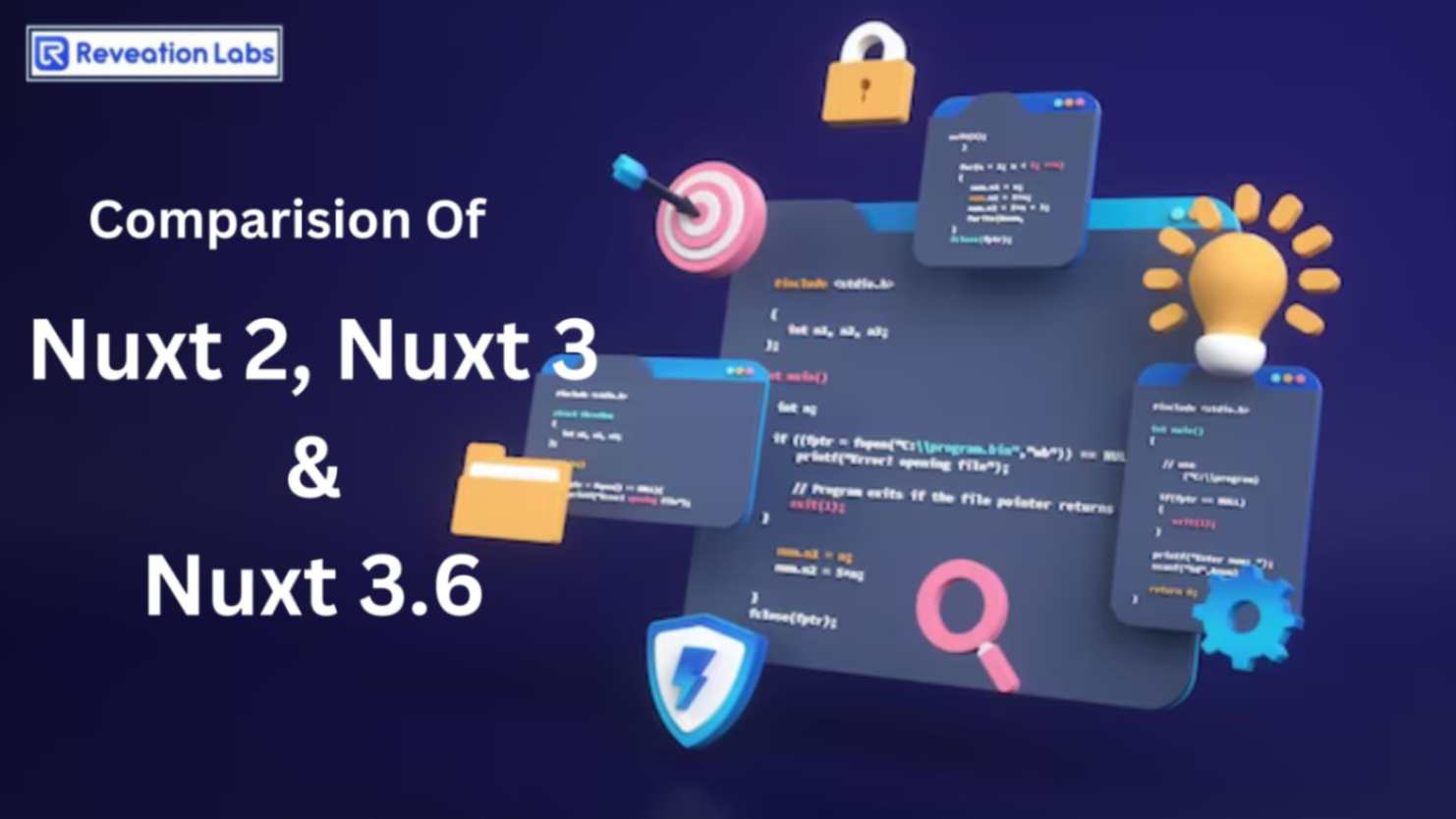Jhansi Pothuru
Wed Aug 30 2023


In the fast-paced world of web development, staying up-to-date with the latest frameworks and tools is essential to deliver top-notch digital experiences.
Among the front-runners in the Vue.js ecosystem, Nuxt.js has been a go-to choice for developers seeking efficient server-side rendering (SSR) and static site generation (SSG) capabilities.
With the recent releases of Nuxt 3 and its subsequent version, Nuxt 3.6, developers are presented with a range of options and advancements that can significantly impact their projects.
In this comprehensive comparison, we'll delve into Nuxt 2, Nuxt 3, and the latest Nuxt 3.6 to help you make an informed decision for your next web development Project.
Nuxt 2: Laying the Foundation
Nuxt 2, the predecessor to the latest iterations, has been a cornerstone for Vue.js developers for its ability to seamlessly handle server-side rendering and static site generation. It’s conventional approach offers a stable and well-tested environment for building dynamic web applications.
With Nuxt 2, developers can create performant and SEO-friendly websites by leveraging SSR, which ensures that content is readily available to search engines and users.
However, as the digital landscape evolves, so do the requirements of modern web applications.
Nuxt 2, while reliable, lacks certain optimizations and features that the newer versions bring to the table. It's important to consider the advancements made in subsequent releases to determine if they align with your project goals.
Also Read: Next.js vs Nuxt.js vs Gatsby: Key Features and Differences
Nuxt 3: Elevating the Developer Experience
Nuxt 3 marks a significant shift in the Nuxt.js ecosystem, bringing a host of improvements to the development experience.
One of the standout features is the improved performance achieved through build-time optimizations on plugins. This eliminates the need for runtime normalization and reordering of plugins, resulting in faster load times and a more streamlined development process.
Another remarkable advancement is the introduction of fully static server components. While earlier versions incurred payload size increases when using server components on static pages, Nuxt 3 resolves this issue by storing rendered server components as separate files. This not only enhances performance but also maintains the benefits of server components for dynamic interactions.
The inclusion of automatic 'static' preset detection further simplifies deployment by tailoring Prerendering support to specific providers like Vercel and Netlify. This means that projects not requiring runtime SSR can still benefit from server-side enhancements without sacrificing deployment efficiency.
Nuxt 3.6: The Cutting Edge
With Nuxt 3.6, the framework continues its journey of refinement, offering even more features and optimizations. A significant highlight is the introduction of the SPA (Single Page Application) loading indicator.
For projects where server rendering is disabled on certain pages, this indicator ensures a smooth user experience during hydration. Developers can customize this loading screen to align with their brand identity or simply opt for a completely clean interface.
Better style inlining and animation controls further enhance Nuxt 3.6's appeal. The improved style inlining capabilities lead to reduced external CSS files, optimizing the loading process and minimizing the impact on performance.
Animation controls provide developers with greater control over transitions, allowing for seamless integration of libraries like GSAP.
Moreover, the focus on increased type safety makes Nuxt 3.6 a robust choice for projects where code quality and maintainability are paramount. The advancements in type support and the removal of any type of defaults enhance the development experience by catching potential errors early in the process.
Choosing the Right Version: Factors to Consider
As you step into the world of web development, picking the right tool is like choosing the perfect brush for your masterpiece. In the world of Nuxt.js, the journey from Nuxt 2 to Nuxt 3 and the latest Nuxt 3.6 brings exciting choices that can supercharge your projects.
Let's break it down into simple terms and find the best fit for you:
1. Your Project's Personality: Nuxt 2's Reliability or Nuxt 3's Modern Flair?
Nuxt 2 is like a reliable old friend. It’s all about making sure your website is easily found by search engines and performs well. If your project's goal is to create straightforward, server-rendered websites, Nuxt 2 is a sturdy option.
Nuxt 3 steps up the game with fancy tricks. It boosts performance, making your website load faster. It's like giving your project a modern makeover without much fuss.
2. The Need for Speed: How Fast Do You Want Your Website?
Nuxt 3’s speed boost is like giving your website a jet engine. Plugins get optimized during the build process, so your site runs smoother. Imagine your users smiling while your site loads in the blink of an eye.
3. Effortless Deployment: Nuxt 3's Magic
Deploying websites can be complex, but Nuxt 3 simplifies the process. It intuitively adapts itself to your deployment environment, optimizing your website's delivery. If server-side rendering isn't essential, Nuxt 3 ensures your website shines without unnecessary complexities.
4. Customization Playground: Flex Your Creativity
Nuxt 3.6 offers a canvas for your creativity. It's similar to a versatile toolset that empowers you to customize loading screens and manage styles seamlessly. The animation controls it provides allow you to infuse your website with captivating interactions.
5. Battling Errors: The Shield of Type Safety
Nuxt 3.6 is like having an eagle-eyed editor. It spots errors before you do and keeps your code safe. It's like a spell that makes sure everything fits together perfectly, reducing surprises that might pop up later.
What Next?
Our group of web development experts is here to assist you. Just reach out to us, let us know what you need, and we'll work together to get the desired output and boost your business.
Conclusion
In the ever-evolving world of web development, progress is the key to delivering exceptional digital experiences. While Nuxt 2 laid the foundation for server-side rendering and static site generation, Nuxt 3 and its subsequent versions build upon that foundation with enhanced performance, deployment efficiency, customization options, and type safety.
As you embark on your next web development journey, carefully evaluate your project's requirements and goals. Consider the advancements offered by Nuxt 3 and Nuxt 3.6 and how they align with your vision. Whether you're seeking optimal performance, streamlined deployment, or a more intuitive development experience, Nuxt 3.6 stands as a testament to the framework's commitment to innovation and excellence in the world of Vue.js development.
Why Reveation Labs
We are a team that is technically proficient and simultaneously caring for your business. Our ideology is to provide the latest technologies that suit your business well.
Let’s discuss your requirements!
Give your business the next-gen technology it deserves. Be a part of our family of successful enterprises that work on high-end software solutions.
Experts
In all the latest technologies and developments.
Creative
To innovate the best solutions and pick the right technology for you.
Ethical
To always put you first & respect your business values and procedures.
Dedicated
To meet the deadlines and help you until the very end and beyond.
Approachable
For all your business needs and queries at any point of time.
Transparent
In our ways of working.




